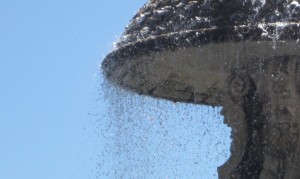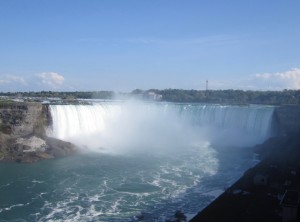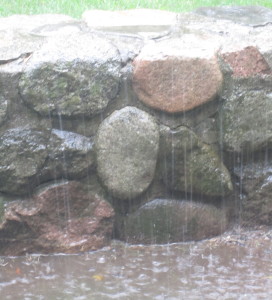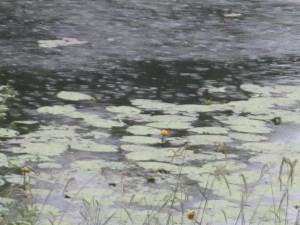Sunday, I decided, was the perfect day to use some of my precious yeast and flour to make a single loaf of bread – the day Christians set aside to gather and remember God’s great gift of self, given and shared with all creation. Baking would be my prayer.
 My old Tassajara Bread book’s cover is stained and bent, but its respect for the ingredients and the nourishment of body and spirit as well as its slow, mindful approach was perfect for my prayer – of course it would be. The book’s author was a young Zen student, later Zen priest, at the Tassajara Zen Mountain Center, Edward Espe Brown.
My old Tassajara Bread book’s cover is stained and bent, but its respect for the ingredients and the nourishment of body and spirit as well as its slow, mindful approach was perfect for my prayer – of course it would be. The book’s author was a young Zen student, later Zen priest, at the Tassajara Zen Mountain Center, Edward Espe Brown.
Strains of Holst’s The Planets filled my little kitchen with a sense of the cosmos and my small place in it. I gathered the ingredients and, lighting a beeswax candle, took a few quiet moments to remember that, as always, I was in the presence of the Holy One whose Love and Breath is the Source of all that is. Breathe in. Breathe out. Breathe in. Breathe out. Breathe in. Breathe out. Begin.
 The first step was making the sponge – something Tassajara introduced into my vocabulary. This stage gives yeast time to grow, uninhibited by the salt added later. As the sponge rises, gluten is formed; that makes kneading easier. I poured warm water into a large bowl. Sprinkling yeast on the water, I marveled at the tiny grains that would come to life and make my bread rise. Simply by being itself, the yeast would move a pound or two of heavy, dense dough.
The first step was making the sponge – something Tassajara introduced into my vocabulary. This stage gives yeast time to grow, uninhibited by the salt added later. As the sponge rises, gluten is formed; that makes kneading easier. I poured warm water into a large bowl. Sprinkling yeast on the water, I marveled at the tiny grains that would come to life and make my bread rise. Simply by being itself, the yeast would move a pound or two of heavy, dense dough.
May I be myself, moving the world forward ever so slightly, by giving the gifts and Love entrusted to me to share.
 I stirred in a little honey to give the yeast something to feed on, added flour, mixed, and then set it aside to rise for an hour, covering the bowl with a damp towel—carefully chosen—printed with illustrations of shells found along New England beaches. I remembered rhythmic sounds of ocean waves, smells of salty air, the variety of sea creatures, all mingled with my awareness of vast cosmic space. My small kitchen was becoming spacious.
I stirred in a little honey to give the yeast something to feed on, added flour, mixed, and then set it aside to rise for an hour, covering the bowl with a damp towel—carefully chosen—printed with illustrations of shells found along New England beaches. I remembered rhythmic sounds of ocean waves, smells of salty air, the variety of sea creatures, all mingled with my awareness of vast cosmic space. My small kitchen was becoming spacious.
There are times in our lives that are “sponge-times,” blessedly free of experiences that hinder growth. They are respites and retreats. They are moments or hours or days.
I am grateful for the sponge-times that bless my life, from childhood to this uncertain moment of pandemic; for the people and places and books and words and music and art and night skies and all things that have been doors of such grace for me.
 Next came the folding-in. With gentle, around-the-bowl-and-toward-the-center motion of the wooden spoon, I blended in salt and oil, careful not to tear the tender dough. I folded in more flour until it held together, a ball in the middle of the bowl.
Next came the folding-in. With gentle, around-the-bowl-and-toward-the-center motion of the wooden spoon, I blended in salt and oil, careful not to tear the tender dough. I folded in more flour until it held together, a ball in the middle of the bowl.
Oh, that we may hold together, this world of people, in these times.
 I didn’t use the mixer, but kneaded by hand on the countertop. I felt the dough becoming supple, stretching, not tearing. The gluten was forming, ready to capture bubbles of carbon dioxide made as the yeast grew. Fifteen minutes, maybe twenty, passed.
I didn’t use the mixer, but kneaded by hand on the countertop. I felt the dough becoming supple, stretching, not tearing. The gluten was forming, ready to capture bubbles of carbon dioxide made as the yeast grew. Fifteen minutes, maybe twenty, passed.
Can I stretch, not break, when life pushes and pulls in different directions?
Next, more time to rise in the warmed oven. Time to wash dishes, clean the countertop, and put the canister of flour and bottle of oil away. I closed my eyes and listened to the music. I remembered walking on beaches and finding shells and an occasional piece of sea glass.
Lying on the couch, I put my feet up, and wondered: Who tended the bees that made the local honey? Who grew the wheat and ground it into flour? Who delivered the groceries to the store and put them on the shelves? I didn’t think much about these jobs before these days of self-isolation.
I am grateful for the people whose work provides what is needed to make a simple loaf of bread. Scarcity and the need for others to risk their health make me value each ingredient. I am careful not to waste. I am sorry for not always having been so careful.
 Next came the punching-down. The yeast and gluten had done their work. The dough had risen high in the bowl. But I made a fist and gently pushed the soft dough until it was almost flat again. It seemed counterproductive. Why squash air pockets the yeast and gluten had worked together to make? Bakers know. Still, it seemed unfair. I punched anyway, re-covered the bowl, and let it rise again. And it did.
Next came the punching-down. The yeast and gluten had done their work. The dough had risen high in the bowl. But I made a fist and gently pushed the soft dough until it was almost flat again. It seemed counterproductive. Why squash air pockets the yeast and gluten had worked together to make? Bakers know. Still, it seemed unfair. I punched anyway, re-covered the bowl, and let it rise again. And it did.
May I rise back up when life punches the breath right out of me. Can I trust that the Spirit living within me won’t be beaten so far down that it won’t be able to rise again? Yes, so far. But there have been times – dark times – when I didn’t. I’m grateful for people in my life who trusted the spirit in me when I couldn’t.
 I gently kneaded the risen dough one last time and put it in the pan. Yes. It had to rise again. Then it was ready for the oven. The aroma of baking bread filled the apartment. I had time to wash dishes again while listening to the music and imagining planets not included in Holst’s suite: planets spinning around other stars in other galaxies.
I gently kneaded the risen dough one last time and put it in the pan. Yes. It had to rise again. Then it was ready for the oven. The aroma of baking bread filled the apartment. I had time to wash dishes again while listening to the music and imagining planets not included in Holst’s suite: planets spinning around other stars in other galaxies.
I began cutting up onions and mincing garlic for soup to have along with fresh bread for dinner.
The oven timer buzzed. The loaf was ready. I had made a small roll, too, for eating while it was still hot, melting a smear of butter.
 Bread. Many grains, one loaf. Gift of the earth. Work of human hands. I placed the roll on a small blue plate, gift of a Cistercian monk-friend years ago. Made by potters down the road from the monastery, the plate’s dark blue glaze edged with white misty swirls has always reminded me of the night sky, the Milky Way, or photos taken by the Hubble. It’s my “cosmos plate.”
Bread. Many grains, one loaf. Gift of the earth. Work of human hands. I placed the roll on a small blue plate, gift of a Cistercian monk-friend years ago. Made by potters down the road from the monastery, the plate’s dark blue glaze edged with white misty swirls has always reminded me of the night sky, the Milky Way, or photos taken by the Hubble. It’s my “cosmos plate.”
I poured red wine into the matching chalice and sat quietly. My family and friends, my communities, the city, the world and all its people, the earth and all the “helpers,” the cosmos—all were gathered in, sitting with me in the Presence of the Source of all.
The world is not the same as it was when a tiny virus brought us all into this time of uncertainty. May I have the courage to move forward into a new time with a will to change, to create new ways of being with one another and with our planet. May we all be willing to shed the old “normal,” as comforting as it might seem, and to make something new, kinder, and better, together.
“Eucharist” means “thanksgiving.” My Sunday baking liturgy finished, I gave thanks, broke the bread, and ate. Amen.
©2020 Mary van Balen



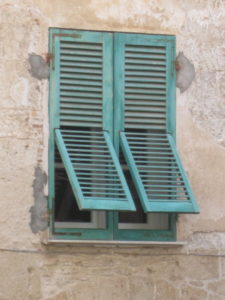

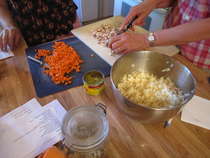
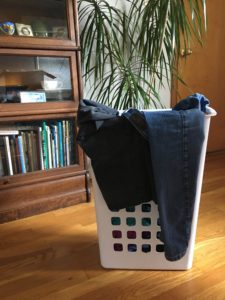 He and his wife were busy folding loads of laundry and sorting it into piles for each of their four children. They were preparing for a month-long trip to visit both sets of grandparents and, in addition to that, camping for a week. In the midst of their preparations, they offered hospitality to a visiting aunt, which would be me. And of course, all four children were around, talking to their visitor and taking care of their own preparations—which may have included cleaning rooms and gathering books to take. I leave it to your imagination. Not a lot of time there to sniff the laundry.
He and his wife were busy folding loads of laundry and sorting it into piles for each of their four children. They were preparing for a month-long trip to visit both sets of grandparents and, in addition to that, camping for a week. In the midst of their preparations, they offered hospitality to a visiting aunt, which would be me. And of course, all four children were around, talking to their visitor and taking care of their own preparations—which may have included cleaning rooms and gathering books to take. I leave it to your imagination. Not a lot of time there to sniff the laundry.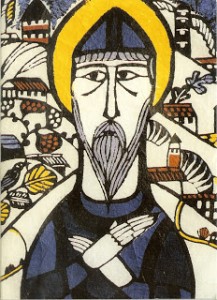

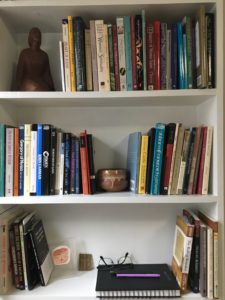

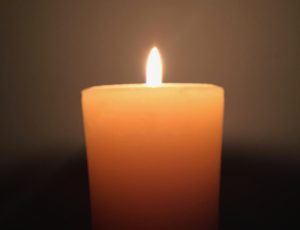 I’m not sure when I began reading books by Thomas Merton. Probably late high school or early college. I’m also not sure how I discovered them. Though I was naturally drawn to contemplative prayer, the word was unfamiliar to me until Merton’s writings provided it. “Contemplative” was not something you heard about sitting in the pews on Sundays or even in religion classes. Not usually. Reflecting on that later, I never understood why. Christianity has a long, rich contemplative tradition.
I’m not sure when I began reading books by Thomas Merton. Probably late high school or early college. I’m also not sure how I discovered them. Though I was naturally drawn to contemplative prayer, the word was unfamiliar to me until Merton’s writings provided it. “Contemplative” was not something you heard about sitting in the pews on Sundays or even in religion classes. Not usually. Reflecting on that later, I never understood why. Christianity has a long, rich contemplative tradition.
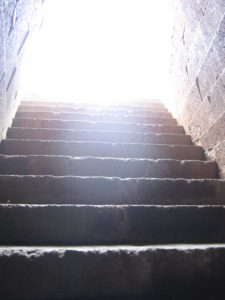
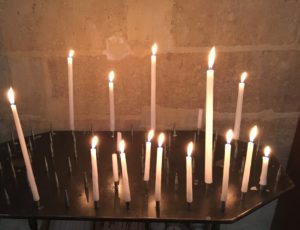
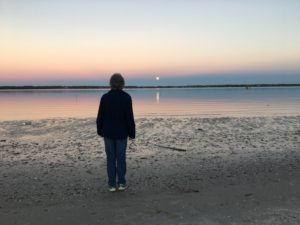





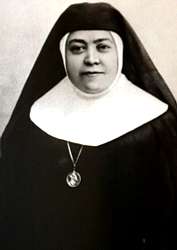 Originally published in The Catholic Times Aug. 13, 2017
Originally published in The Catholic Times Aug. 13, 2017
